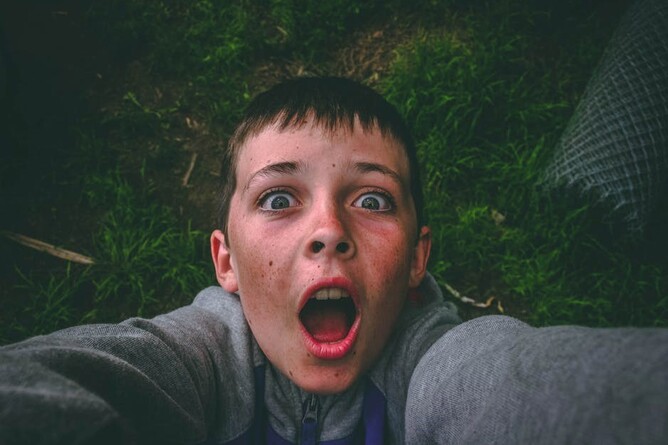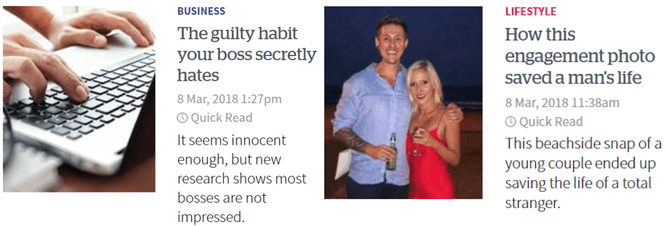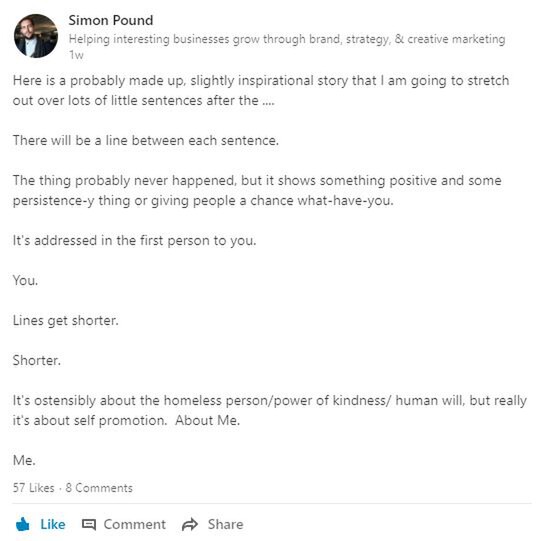Is clickbait dying or is it getting stronger? It’s absolutely everywhere we turn and can drive even the most sane individuals crazy. But here’s why your organisation needs to apply the principles of it.
“I recently attended a course on how to write clickbait, you won’t believe what happened next.” This was the start of a Facebook post a friend of mine once coined. It really made me laugh. It perfectly captured the world we live in today. In the last couple of days, the son of Gary Oldman has blasted the ‘clickbait’ media for resurfacing an assault allegation against the actor.
As I write this, here are two of the top stories on the homepage of the NZ Herald website:
Now, I don’t know about you but I couldn’t go to sleep without knowing what that guilty habit is that could be annoying my boss George, or how on earth that photo saved someone’s life.
Clickbait is a dirty word. It gets a really bad rap, but if you don’t perfect the art your content is likely to go unread, forcing the almighty social media algorithms to banish it into obscurity.
Scrolling through my Facebook and LinkedIn feeds, I see way too many posts from people and organisations that meanderingly waffle on with nothing to make anyone want to click on the link in the post. You constantly see posts like “great to see <insert company> at the <insert boring conference name>”. Instead, pick out something really fascinating that will grab people’s attention and get them wanting read more. “When <insert company name> posted a $7m loss in 2013, they knew something had to change. Here’s how they turned it around…”.
While it might become a bit predictable for cynics like me, we will still click on the link because you’ve piqued our curiosity. You’ll likely find that your click through rates go up. Although, you may find yourself the subject of posts like this:
Now I’m not suggesting to follow the stock standard template above unless you want to be seen as self-involved and self-congratulatory. In this humorous post though, there are some lessons to be learnt about how to craft good social media content.
Good clickbait headlines tap into our:
Curiosity
The ‘you won’t believe what happened next’ type headline gets us just dying to know what happened, it eats away at us forcing us to click on the link.
Emotions
Good clickbait taps into our emotions through heartfelt and inspirational stories intended to get us liking and sharing content. Goalcast on Facebook and YouTube have absolutely nailed this but to be fair, their content is up there with the best you’ll find on social media at the moment.
Fears and insecurities
‘The common mistake that causes small businesses to fail’. Oooh, could I be making the same mistake? What is it? Click. Job done. We’ve all got things we know we could be better at in our lives and tapping into that gets people clicking through.
Now I’m not endorsing clickbait in its entirety. Doing so runs the risk of becoming predictable and winding your audience up if you keep employing these manipulative tactics. You never want to run the risk of over promising and under delivering as clickbait headlines so often do.
Creating relevant, interesting and engaging content for your audience is always the end goal. But in the blizzard of content that’s out there, we’re still seeing far too many underwhelming blog titles and longwinded social media posts.
If you want to inject a blast of colour into a black and white world, have a chat to us about how we can help to create engaging content for your audiences.
You won’t believe what we can achieve for you! Drop us a line at welcome@theclaritybusiness.co.nz to find out ;)
By Daniel McCabe



